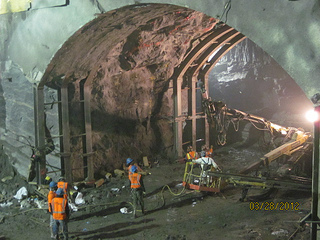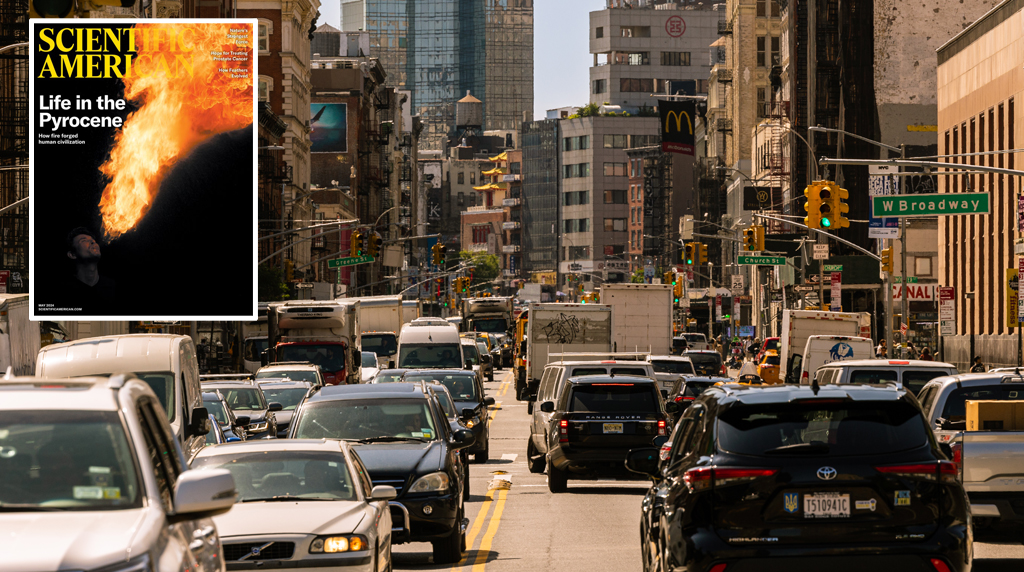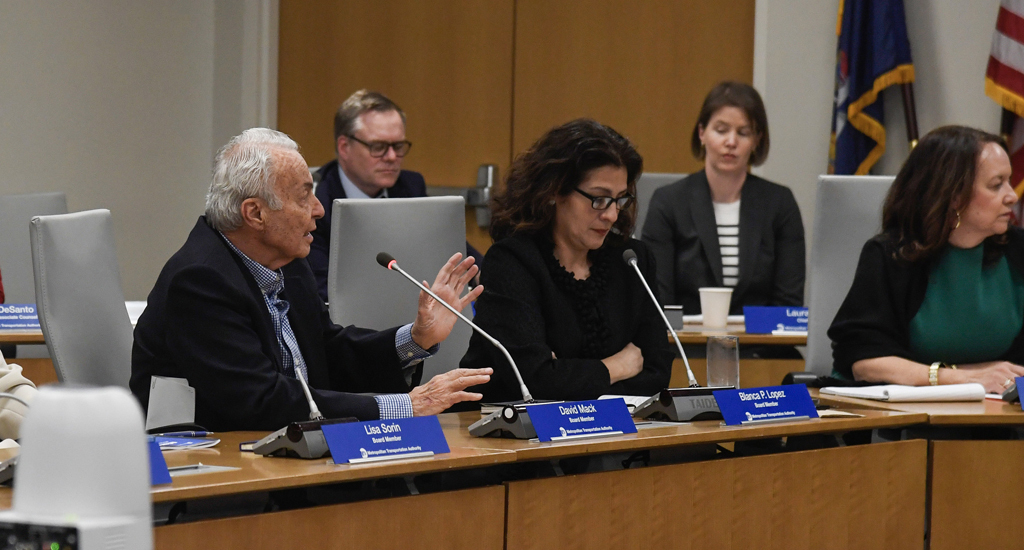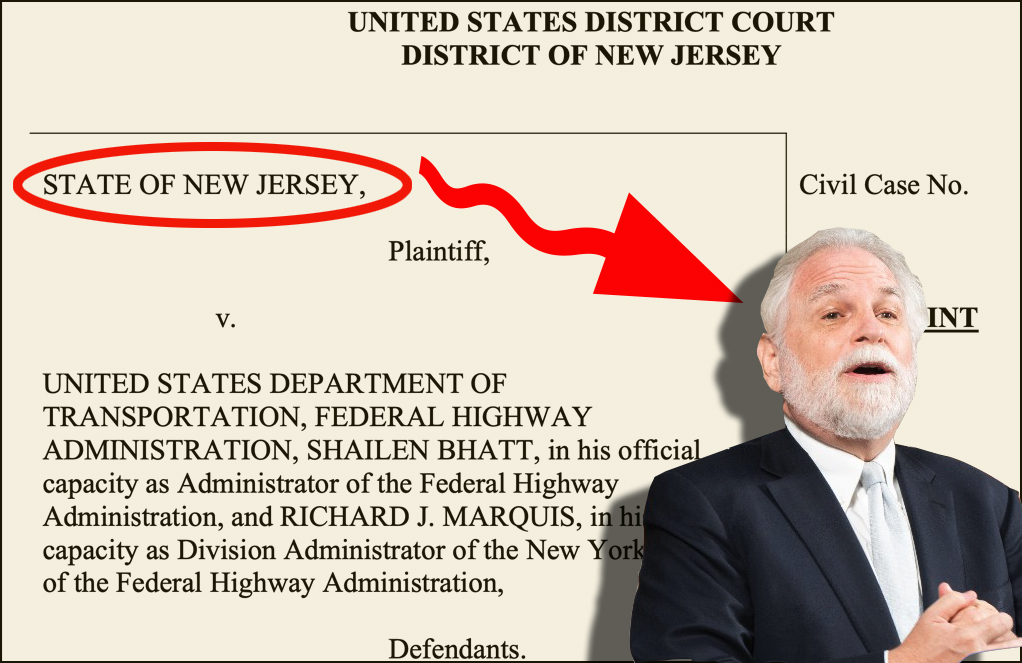Talking Transit Funding With Construction Honcho Denise Richardson
12:06 PM EDT on April 5, 2012
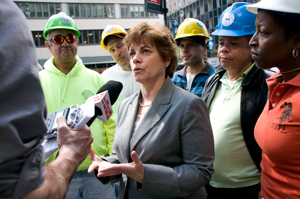
Transportation infrastructure is big business. With tens of billions of dollars at stake, nobody tracks the financial health of the state's transit and road systems more closely than the construction industry. And right now, the future of transportation funding in New York is hazy indeed.
Albany just passed a budget that lets the MTA move forward as planned with necessary repair and construction work, mainly by taking on billions in additional debt, including a $2.2 billion loan from the federal Railroad Rehabilitation & Improvement Financing Program (RRIF). But instead of providing stable new revenue streams to keep pace with the agency's costs, the legislature and Governor Andrew Cuomo cut existing dedicated MTA taxes, leaving transit riders to the vagaries of the annual budget process. The state's biggest highway project, the Tappan Zee Bridge, is hurtling forward despite the possibly illegal lack of a financing plan. And though New York-area representatives helped kill the House of Representatives' singularly terrible transportation bill, Congress still hasn't passed a new law to stabilize federal transportation funding.
"All this short-term thinking plays into what ultimately becomes a series of bad planning decisions, because everything is left until it’s a crisis."
To get some perspective on the state of transportation funding in New York, we sat down with Denise Richardson, the managing director of the General Contractors Association. Representing the region's heavy construction contractors, Richardson is a major voice for transportation investments. With experience in city and state government, including at the MTA, she's a leading authority on the ins and outs of infrastructure. Below is an edited transcript of our conversation.
Noah Kazis: Let’s start with the recent MTA capital plan deal. Your statement sounded like you’re happy construction is finally moving forward.
Denise Richardson: Well the whole situation with the MTA capital plan was made riskier because of the lack of movement on the federal transportation bill. Everything cascades. Given that so much of the MTA capital plan relies on getting approval from the federal government for the RRIF loan, had the legislature either not approved the bond cap increase or not approved the $770 million funding request, it would have put the whole capital plan at risk. It would’ve put the federal government in a position of being able to decline the RRIF loan, which would’ve been huge. But it also would’ve forced the MTA to go back and re-scope the capital plan, which would not have been good. The MTA spends a lot of time and thought scheduling their projects. It’s not a random act. When you have to go back and cut projects, it cascades for years to come. So we were very happy that the capital plan funding was approved intact.
NK: Speaking of years to come, how does the financing arrangement for this capital plan tee up what may be necessary for 2014?
DR: There has to be a very serious conversation about how to fund the MTA, which is part of the larger conversation about funding infrastructure nationally. We’re not the only place that’s having this debate. As we head into 2014 and the next MTA capital plan, we have to really talk about how we’re going to fund the MTA going forward.
This is a debt-laden capital plan. Everyone who follows the MTA knows that. To the MTA’s credit, what they’re doing is they’re paying off old debt while they take on new debt. The new debt has very favorable terms. Interest rates are as low as they’re ever going to be, so they’re swapping less favorable debt for more favorable debt. But it’s still debt and it still needs to paid. We have to look at a revenue source for the MTA that is stable, recurring and will be there.
NK: So what are the options you see on the table? It seems like the payroll tax is probably not going to be increased.
DR: We were watching the whole discussion about the payroll tax very carefully. Part of the issue with the payroll tax is a mindset that the MTA network should be paid for by its users, that the larger business community doesn’t benefit from the MTA network. I think if you look at businesses on Long Island and in Westchester, even if that business’s employees don’t necessarily ride the MTA to work, the fact that the MTA is there alleviates traffic congestion. If you look at property values in communities that are served by the MTA or have an express station, you see different property values than in communities not. There is an intrinsic value to that, that we, as a society, aren’t willing to acknowledge.
NK: So how do you capture that intrinsic value? Congestion pricing is back in the discussion --
DR: There’s a lot of merit to congestion pricing. If you look at other cities that have implemented congestion pricing, London and Stockholm come to mind, you don’t see articles about how it killed businesses and killed jobs. You didn’t find a massive number of businesses moving out of those cities. Here, congestion pricing got wrapped up in the whole outer borough-versus-Manhattan discussion. I live in an outer borough, so I can talk about this stuff.
My personal issue is that if you look at parking in Manhattan, most of the people who drive into work do not pay for their own parking. Their parking is paid for by their businesses, their businesses write it off. Believe me, if most people who drove into work every day in Manhattan paid for their own parking at $35 or $40 a day, we wouldn’t be having this discussion about congestion pricing. Let’s look at the real cost of driving to Manhattan.
NK: Turning back to the current capital plan, what are the threats that could still derail it over the next two years? The federal government seems one.
DR: In the capital plan that ultimately got approved, the MTA assumed a stable level of federal funding, and I think that that was an appropriate assumption. If you go back about a year and a half ago, when they first put the capital plan together, they were assuming an increase in federal funding. I think the RRIF loan was a very creative way to get the funding that’s needed for East Side Access [which will connect the LIRR to Grand Central], because it’s the heavy railroad improvement program. So I think that the MTA capital plan, for the remainder of its term, is in good shape. It’s the next one we have to think about.
NK: You’re not worried about some version of the House proposal coming back to life?
DR: I think that the House never expected the amount of pushback nationwide, and from cities that you would not think of as being heavily transit dependent.
NK: It was something to watch.
DR: It was. I enjoyed it for a couple of reasons. First of all, I enjoyed it because the GCA was among the first to jump on the issue and talk to congressmen around the country. A lot of our members are national and international firms.
And you saw other places around the country that have primarily bus networks look at this and say, "Wait a minute, if we want to build a new depot and we want to apply for federal funding, we’re not going to get it." So you saw this real grassroots movement.
From a democracy perspective, the House leadership, wrapping themselves in their Tea Party flag, said, "This is not what we want the federal government to stand for." To see another group of people from all around the country say, "Well wait a minute, yes we do," was a really effective use of government, because you had two very different views of what government is. And in the end, the House was forced to withdraw their proposal.
The fact that they have not been able to put forward a new version of a transportation bill is a tremendous disservice to everybody. I don’t know if by the time November comes that’s going to be a big election issue. But I would certainly think that people around the country would sit back and say, "This House that we elected two years ago, because we wanted a different philosophy of government, what have they really accomplished?" And I think it will be interesting to see that assessment.
NK: Can you explain, in concrete terms, why the short-term extensions pose a challenge to getting projects going efficiently?
DR: On a series of short-term extensions, you’re always making short-term business decisions. Because we don’t know where we’re going to stand over the next three to five years in terms of a portfolio of work, we’re not going to make the decisions to invest in new equipment, buy a new building, to expand our space, hire 30 or 40 more people in anticipation of work coming down the road. We don’t know what’s going to be there. Short-term decisions aren’t good for the economy.
For an agency, look at DOT’s decision to stop the environmental review process for the cantilever section of the BQE. It’s an important project, but in the scheme of all the priorities, it wasn’t at the top of the list. So they had to make the very difficult decision to stop the work and basically say, "Let’s wait until the project becomes more critical." Which is not the way you make infrastructure decisions. All this short-term thinking plays into what ultimately becomes a series of bad planning decisions, because everything is left until it’s a crisis.
Stay tuned for part two of our interview with Denise Richardson tomorrow, where we discuss the Tappan Zee Bridge, how New York state funds roads, and the enduring mystery of the New York Works Fund.
Stay in touch
Sign up for our free newsletter
More from Streetsblog New York City
Deal Reached: Hochul Says ‘Sammy’s Law’ Will Pass
The bill, though imperfect, has been four years in the making.
Komanoff: A ‘Noise Tax’ Can Ground NYC Helicopters
A proposed $400 “noise tax” on “nonessential” flights is a start — and it will work.
Thursday’s Headlines: Welcome to the War on Cars, Scientific American
Our favorite story yesterday was this editorial in an unexpected place. Plus other news.
Meet the MTA Board Member and Congestion Pricing Foe Who Uses Bridges and Tunnels For Free Every Day
Mack drives over the transportation authority's bridges and tunnels thanks to a rare perk of which he is the primary beneficent.
Randy Mastro Aspires to Join Mayor’s Inner Circle of Congestion Pricing Foes
The mayor's reported pick to run the city Law Department is former deputy mayor under Rudy Giuliani and notorious foe of bike lanes and congestion pricing.
